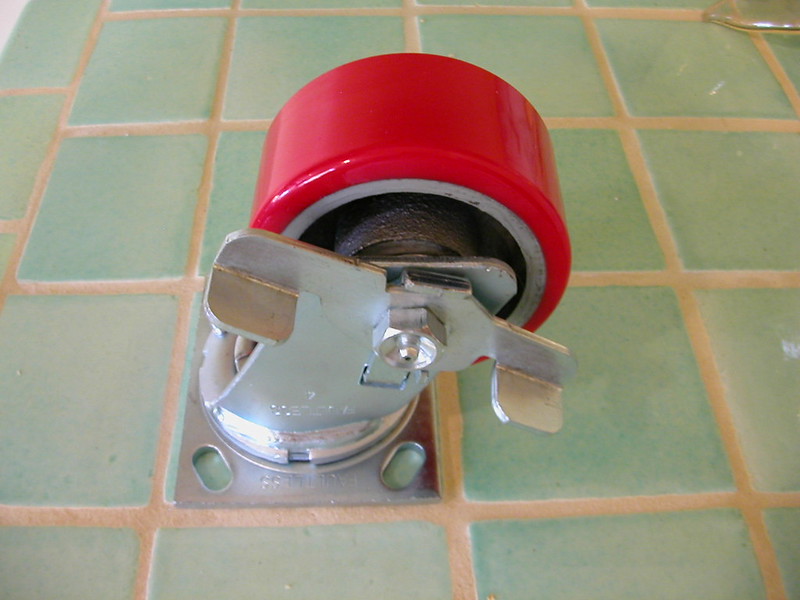Unlike traditional caster wheels, shock-absorbing casters reduce the impact of rough surfaces when moving equipment. They also protect the cargo loaded on carts, dollies, and trucks.
However, choosing the wrong shock-absorbing caster can do more harm than good. There’s a science to spring deflection, and the wrong initial force could jilt the equipment or cause it to vibrate excessively.

Design
Shock-absorbing casters are often used in industrial environments where equipment must function over rough floors and surfaces. These casters are designed to absorb impact and vibration, resulting in a smoother, more comfortable ride for carts and equipment. They also offer various aesthetic options that make them ideal for different industries. They feature a rubber-based spring system that eliminates the shortened lifespan and loss of tension found in standard metal springs.
Choosing the right small shock absorbing casters is crucial because they reduce impact, noise, and vibration when transporting equipment over uneven flooring or on sloped terrain. This helps to protect equipment from damage, as well as the workers and operators who move it around. This ultimately leads to increased productivity and cost savings for your business.
Size
Shock-absorbing casters use springs and buoyancy to cushion the weight of the load, protecting equipment from damage during transportation. They also reduce noise levels and wear on floors, extending caster, wheel, and bearing life.
This unique caster type is typically used for specific applications and industries requiring cushioned rides to protect sensitive equipment from shock loads and vibrations. Common uses include:
- Medical equipment and carts.
- Institutional and laboratory equipment and stands.
- Point of purchase displays and shelving.
- Computer mainframes and towers.
- Sound and lighting equipment.
The casters are available in various styles and capacities, including medium duty. Choosing the right size is important based on your application and the environment you’ll be using it in. You can find the size and load capacity by reading the casters’ product specifications and bolt-hole patterns.
Material
A key part of a shock-absorbing caster is its material. The wrong material can cause the caster to fail or create unnecessary damage during use.
For example, if a caster is dropped onto a floor covered in metal shavings, it may be permanently damaged. The caster can also be subjected to harsh movement, such as frequent turning or high speeds during transportation.
A good choice for clean environments is a quiet-rolling medium-duty shock-absorbing plate caster with an aluminum frame and non-marking wheels that are safe for all floors. Other options include chemical- and water-resistant casters for facilities that experience extreme temperatures. These casters protect. If you’re looking for a caster suitable for clean environments, a medium-duty shock-absorbing plate caster with quiet-rolling capabilities would be a great option. It protects equipment from vibration and noise during transit and can reduce worker fatigue during transportation. They often transport computer mainframes and towers, medical equipment, point-of-purchase displays, and assembly line dollies.
Load Capacity
Shock-absorbing casters help protect delicate and valuable cargo during transport. They can minimize impact and vibration damage to the load and jarring of workers and equipment.
These casters have a spring that dissipates shock, protecting the load and reducing vibrations. However, they must also be loaded at a certain capacity to work properly.
To determine the right load capacity for a shock-absorbing caster, consider its environment and floor conditions. For instance, if the environment is rough or uneven, use heavy-duty casters with large-diameter hardened ball bearings and thick steel frames. They are also designed to endure higher impacts than medium-duty and light-duty casters. These casters are ideal for airport ground equipment and assembly line dollies in manufacturing plants.
Installation
Putting a small shock-absorbing caster on a cart or other equipment helps protect the contents from damage, noise, and vibration. It also makes the equipment much easier to move across uneven surfaces.
But, the wrong caster can negate these benefits. Choosing a caster rated higher than your equipment needs can cause the springs to deflect too much, reducing their ability to dissipate shock.
For maximum shock absorption, look for vertical-mounted spring (VMS) casters. They feature springs mounted vertically and a lower overall height than the clamshell design of other shock-absorbing casters. This design also allows the springs to absorb more impact when the caster is empty, reducing vibration and noise when transported on uneven floors or terrain.
